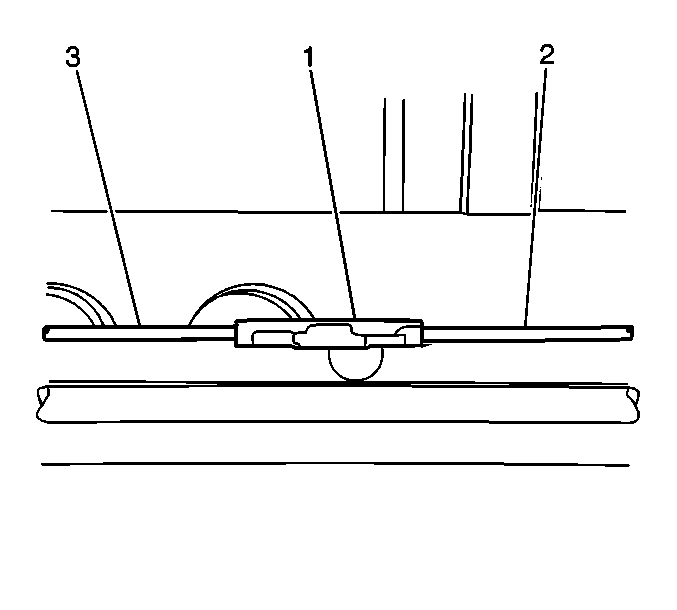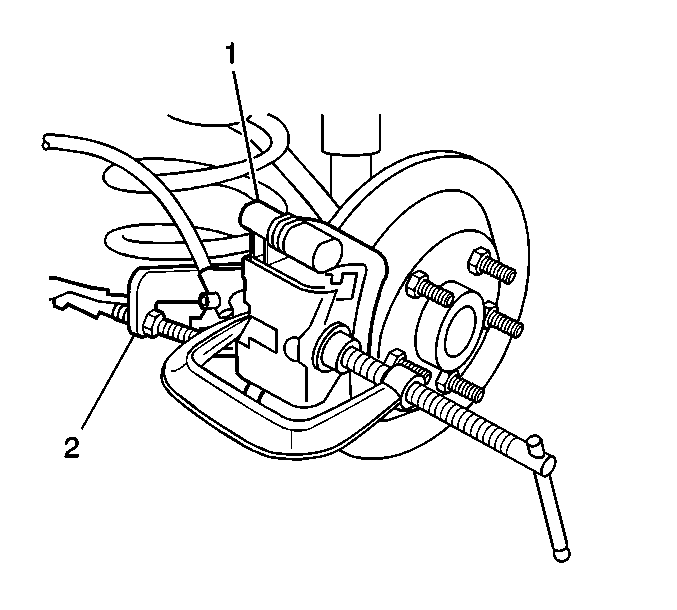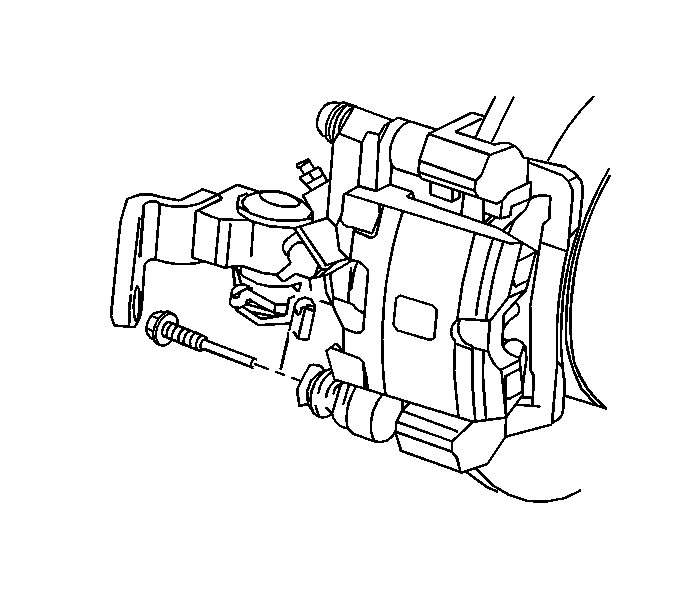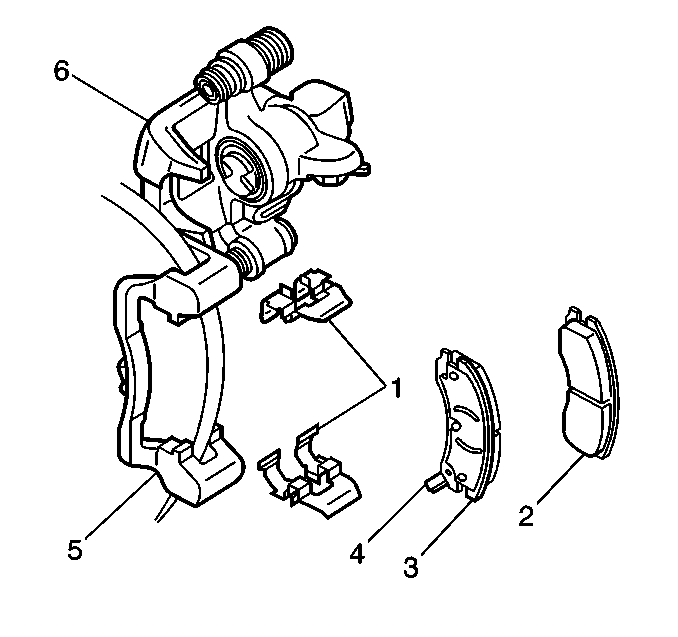Caution: Refer to Brake Dust Caution in the Preface section.
Caution: Refer to Brake Fluid Irritant Caution in the Preface section.
Notice: Refer to Brake Fluid Effects on Paint and Electrical Components Notice in the Preface section.
Removal Procedure
- Inspect the fluid level in the brake master cylinder reservoir.
- If the brake fluid level is midway between the maximum-full point and the minimum allowable level, no brake fluid needs to be removed from the reservoir before proceeding.
- If the brake fluid level is higher than midway between the maximum-full point and the minimum allowable level, remove brake fluid to the midway point before proceeding.
- Raise the vehicle and suitably support. Refer to Lifting and Jacking the Vehicle in General Information.
- Remove the tire and wheel assembly. Refer to Tire and Wheel Removal and Installation in Tires and Wheels.
- Pull down on the front park brake cable (3).
- Remove the front park brake cable from the park brake cable connector (1).
- Install a large C-clamp over the top of the brake caliper housing and against the back of the outboard brake pad.
- Remove the brake caliper inlet fitting bolt to the brake caliper.
- Remove the brake hose from the brake caliper.
- Remove and discard the two copper brake hose gaskets. These gaskets may be stuck to the brake caliper and/or the brake hose end.
- Plug the opening in the brake caliper and pipe to prevent fluid loss and/or contamination.
- Disconnect the park brake cable bracket (2) from the brake caliper (1).
- Disconnect the park brake cable from the park brake lever on the brake caliper.
- Remove the lower brake caliper pin bolt.
- Rotate the brake caliper up.
- Slide the brake caliper off the upper pin bolt to remove.

Notice: When using a large C-clamp to compress a caliper piston into a caliper bore of a caliper equipped with an integral park brake mechanism, do not exceed more than 1 mm (0.039 in) of piston travel. Exceeding this amount of piston travel will cause damage to the internal adjusting mechanism and/or the integral park brake mechanism.
| • | Compress the brake caliper piston into brake caliper bore to allow the piston enough clearance to slide the brake caliper off the brake rotor. |
| • | Remove the C-clamp. |



Installation Procedure
- If reusing the brake caliper retainers and sleeves, clean the sleeves using denatured alcohol, or equivalent.
- Lubricate the brake caliper pin bolts with high temperature silicone lube.
- Install the brake caliper to the upper caliper pin bolt.
- Rotate the brake caliper (6) down over the brake pads, onto the brake caliper bracket (5).
- Install the lower brake caliper pin bolt.
- Remove the plugs in the brake hose end.
- Assemble the brake hose bolt and the NEW copper brake hose gaskets to the brake hose.
- Install the brake hose to caliper bolt to the brake caliper.
- Connect the park brake cable to the park brake lever on the brake caliper.
- Install the park brake cable bracket (2) to the brake caliper (1).
- Install the park brake cable bracket bolt.
- Install the front park brake cable (3) to the park brake cable connector (1).
- Bleed the brake system. Refer to Hydraulic Brake System Bleeding in Hydraulic Brakes.
- With the engine OFF, gradually apply the brake pedal to approximately 2/3 of its travel distance.
- Slowly release the brake pedal.
- Wait 15 seconds, then repeat steps 19-20 until a firm brake pedal apply is obtained. This will properly seat the brake caliper pistons and brake pads.
- Install the tire and wheel assembly. Refer to Tire and Wheel Removal and Installation in Tires and Wheels.
- Lower the vehicle.

Notice: Refer to Fastener Notice in the Preface section.
Tighten
Tighten the brake caliper pin bolt to 27 N·m (20 lb ft).
Important: Install NEW copper brake hose gaskets.

Tighten
Tighten the brake hose to caliper bolt to 44 N·m (32 lb ft).

Tighten
Tighten the park brake cable bracket bolt to 43 N·m (32 lb ft).

